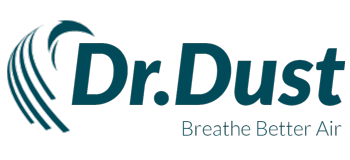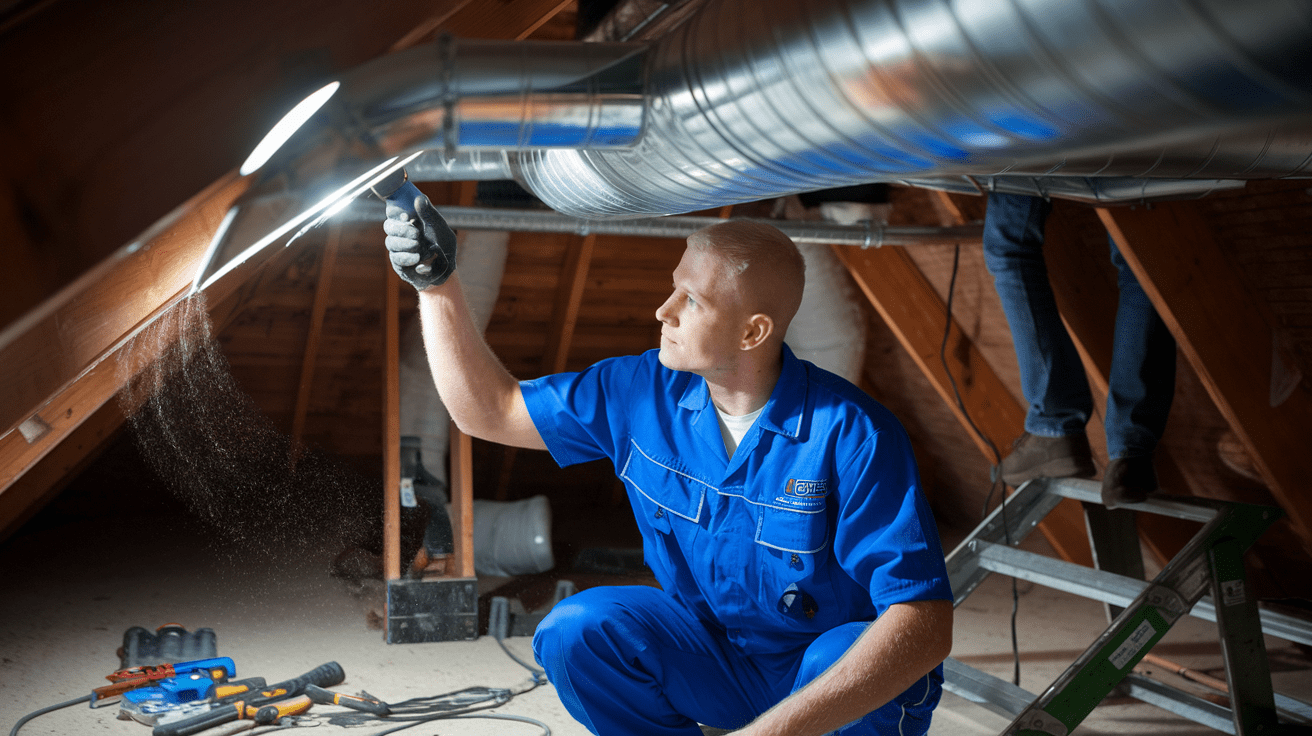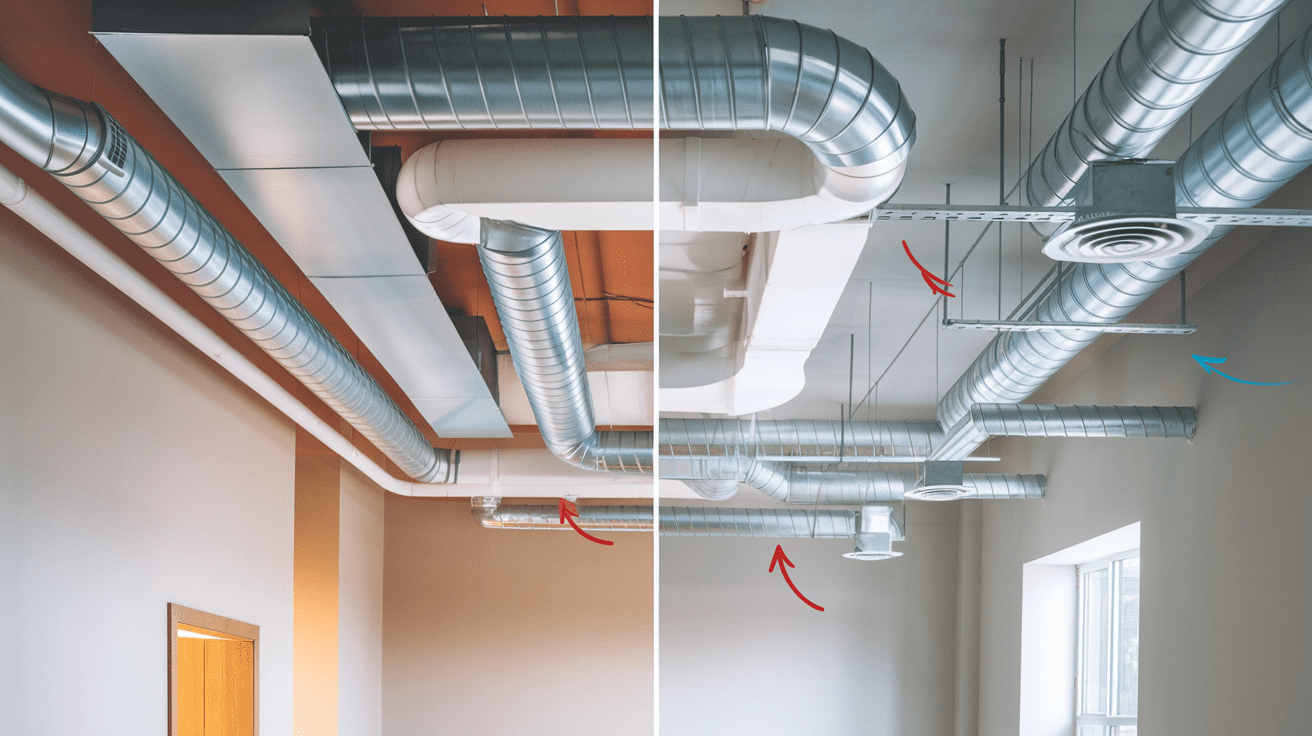Is your home feeling stuffy and uncomfortable? 😓 You might be surprised to learn that the culprit could be hiding in your walls – your air ducts. Poor airflow in your home’s duct system can lead to uneven temperatures, increased energy bills, and even health issues. But don’t worry, there’s hope!
Imagine walking into a home where every room is perfectly comfortable, your energy bills are lower, and the air feels fresh and clean. 🏡💨 This isn’t just a dream – it’s entirely possible with the right strategies to enhance airflow in your air ducts. In this post, we’ll explore four key approaches to transform your home’s air circulation, from understanding your duct system to improving overall ventilation. Get ready to breathe easier and live more comfortably!
Understanding Your Home’s Air Duct System
A. Identifying common airflow issues
When it comes to your home’s air duct system, several issues can impede proper airflow. Here are some of the most common problems:
- Clogged air filters
- Leaky ducts
- Blocked vents or registers
- Improperly sized ductwork
- Excessive dust and debris accumulation
To better understand these issues, let’s compare their causes and symptoms:
| Issue | Cause | Symptoms |
|---|---|---|
| Clogged air filters | Lack of regular replacement | Reduced airflow, increased energy bills |
| Leaky ducts | Poor installation or age-related wear | Uneven temperatures, whistling sounds |
| Blocked vents | Furniture placement or closed registers | Rooms feeling stuffy or uncomfortable |
| Improperly sized ductwork | Incorrect initial design | Weak airflow in certain areas of the home |
| Excessive dust accumulation | Lack of regular cleaning | Poor air quality, visible dust around vents |
B. Mapping your duct layout
Understanding your home’s duct layout is crucial for identifying potential airflow issues. Start by creating a simple diagram of your home’s floor plan. Mark the location of all vents, returns, and the main HVAC unit. This visual representation will help you:
- Identify areas with poor airflow
- Locate potential blockages or leaks
- Plan for future improvements or modifications
C. Recognizing signs of poor airflow
Now that we’ve covered common issues and the importance of mapping your duct layout, let’s discuss how to recognize signs of poor airflow in your home:
- Inconsistent temperatures between rooms
- Stuffy or stagnant air in certain areas
- Excessive dust accumulation on surfaces
- Higher than usual energy bills
- Weak airflow from vents when the system is running
By being aware of these signs, you can quickly identify and address airflow problems in your home’s air duct system. Next, we’ll explore regular maintenance practices to ensure optimal airflow and system efficiency.
Regular Maintenance for Optimal Airflow
A. Scheduling professional duct cleaning
Regular professional duct cleaning is essential for maintaining optimal airflow in your home. Experts recommend scheduling this service every 3-5 years, depending on factors like pets, allergies, and local air quality. Professional cleaners use specialized equipment to remove dust, debris, and potential contaminants from your ductwork.
B. Replacing air filters on time
Timely replacement of air filters is crucial for maintaining efficient airflow. Here’s a quick guide:
| Filter Type | Replacement Frequency |
|---|---|
| Fiberglass | Every 30 days |
| Pleated | Every 90 days |
| HEPA | Every 6-12 months |
C. Clearing vents and registers
Keep your vents and registers free from obstructions to ensure proper airflow. Follow these steps:
- Remove vent covers and vacuum inside
- Wipe down grilles with a damp cloth
- Ensure furniture isn’t blocking vents
- Check for closed dampers and open them
D. Sealing leaks and gaps
Addressing leaks and gaps in your ductwork can significantly improve airflow efficiency. Use mastic sealant or metal-backed tape to seal visible leaks. Pay special attention to connections and joints where ducts meet vents or your HVAC unit.
By implementing these maintenance strategies, you’ll ensure your air ducts operate at peak efficiency. Next, we’ll explore how improving duct design can further enhance air circulation in your home.
Improving Duct Design for Better Air Circulation
Minimizing bends and turns
To improve air circulation in your home, minimizing bends and turns in your duct system is crucial. Straight ducts allow for smoother airflow, reducing resistance and improving overall efficiency. When designing or retrofitting your duct system, aim for the most direct routes possible.
- Benefits of minimizing bends:
- Reduced air resistance
- Improved energy efficiency
- Lower noise levels
- Decreased dust accumulation
Optimizing duct placement
Strategic duct placement can significantly enhance air circulation throughout your home. Consider the following factors when positioning ducts:
- Room layout and size
- Heat sources and cold spots
- Furniture placement
- Windows and doors
| Placement Consideration | Benefit |
|---|---|
| Near exterior walls | Counteracts temperature fluctuations |
| Away from obstructions | Ensures unimpeded airflow |
| Central locations | Promotes even air distribution |
Using appropriate duct materials
The choice of duct materials plays a vital role in maintaining optimal airflow. Different materials offer various benefits:
- Flexible ducts: Ideal for tight spaces, but prone to kinks
- Rigid metal ducts: Durable and efficient, with smooth interior surfaces
- Fiberglass ductboard: Provides insulation but may accumulate dust
Incorporating return air ducts strategically
Proper placement of return air ducts is essential for maintaining balanced airflow. Consider these tips:
- Install returns in every major room
- Position returns high on walls for better air circulation
- Ensure return ducts are sized appropriately for the space
By implementing these duct design improvements, you can significantly enhance air circulation in your home, leading to better comfort and energy efficiency. Next, we’ll explore ways to enhance overall home ventilation, complementing your optimized duct system.
Enhancing Overall Home Ventilation
Balancing air pressure throughout the house
Achieving proper air pressure balance in your home is crucial for optimal ventilation and energy efficiency. To balance air pressure:
- Ensure all rooms have adequate return air vents
- Keep interior doors open when possible
- Install door undercuts or transfer grilles for closed rooms
- Consider a zoned HVAC system for multi-story homes
| Pressure Issue | Solution |
|---|---|
| Positive Pressure | Open windows or install exhaust fans |
| Negative Pressure | Add make-up air system or adjust HVAC settings |
Utilizing ceiling fans to complement duct airflow
Ceiling fans can significantly enhance air circulation and complement your duct system:
- In summer: Set fans counterclockwise to create a cooling effect
- In winter: Reverse direction to distribute warm air downward
- Use energy-efficient, multi-speed fans for better control
- Position fans strategically in high-traffic areas and large rooms
Considering whole-house ventilation systems
Whole-house ventilation systems can greatly improve overall air quality and circulation:
- Supply ventilation systems: Bring fresh air into the home
- Exhaust ventilation systems: Remove stale air from the house
- Balanced ventilation systems: Combine supply and exhaust functions
- Energy recovery ventilators (ERVs): Exchange heat and moisture between incoming and outgoing air
| System Type | Best For |
|---|---|
| Supply | Humid climates |
| Exhaust | Cold climates |
| Balanced | All climates |
| ERV | Energy-conscious homeowners |
Implementing these strategies will significantly enhance your home’s overall ventilation, working in tandem with your air duct system to create a healthier, more comfortable living environment. Next, we’ll explore how these improvements can impact your home’s energy efficiency and indoor air quality.
Maintaining optimal airflow in your home’s air ducts is crucial for a comfortable and healthy living environment. By understanding your duct system, performing regular maintenance, improving duct design, and enhancing overall home ventilation, you can significantly boost the efficiency of your HVAC system and improve indoor air quality.
Take the time to assess your home’s air duct system and implement these strategies to maximize airflow. Not only will you enjoy better temperature control and reduced energy costs, but you’ll also create a more pleasant and healthier living space for you and your family. Remember, a well-functioning air duct system is an investment in your home’s comfort and your family’s well-being.





